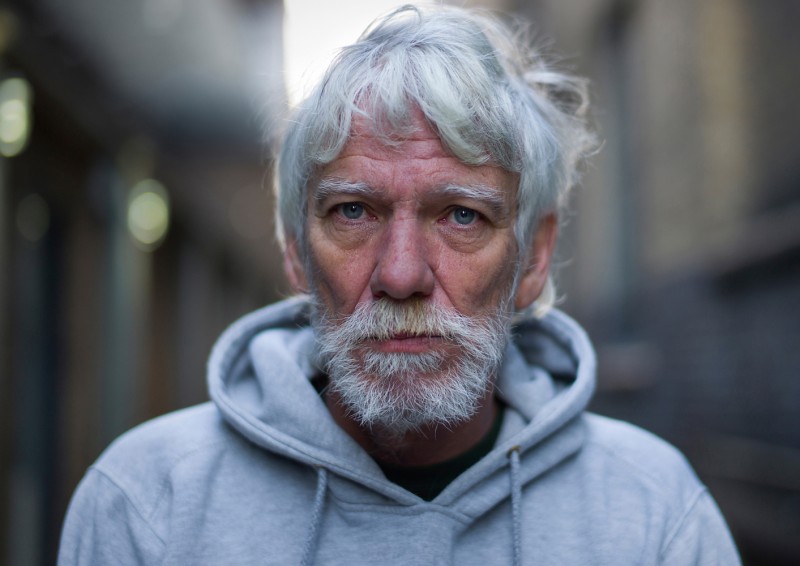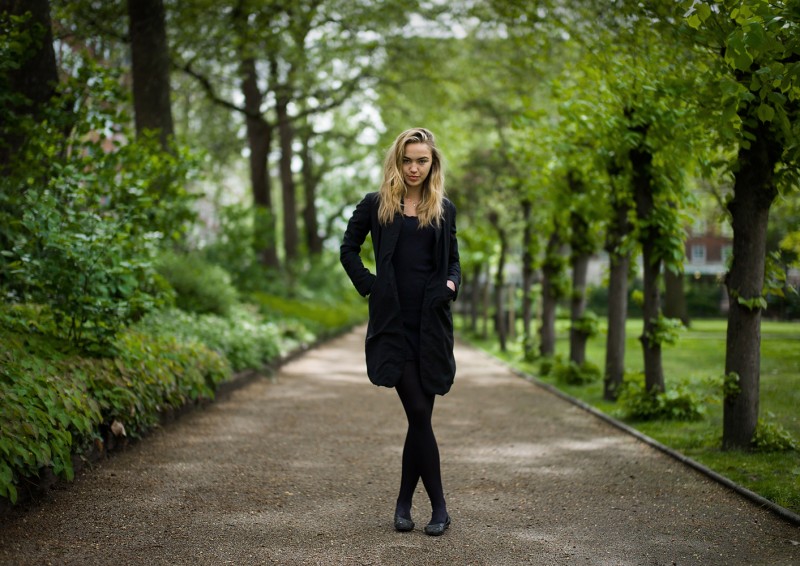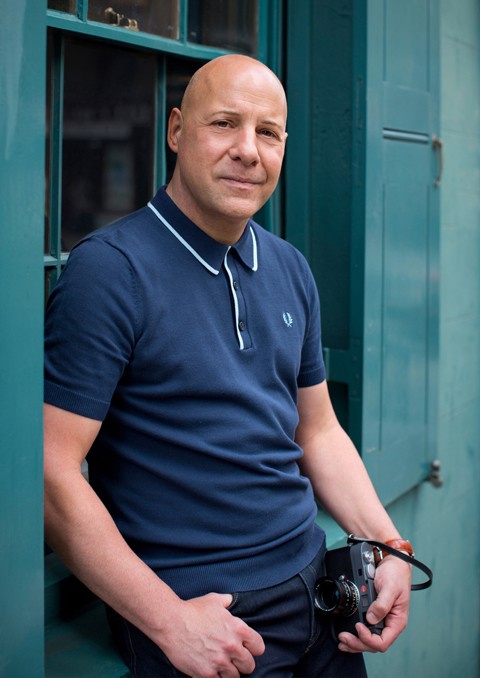Beautiful Strangers
Beautiful Strangers
Peter Zelewski
July 7, 2015

Beautiful Strangers is a type of street photography that you call street portraits; nevertheless, it seems like your pictures somehow lean towards studio photography, and are characterized by their very minimalistic composition.
My background is graphic design which is the field I have been working in for more than fifteen years. Because imagery plays such an important role in design, I spent a lot of my time in the studio art directing photo shoots, which involved working very closely with professional models and photographers. I started taking photographs myself to better understand what was happening in the studio, and to be able to communicate more effectively with the photographers I was working with.
Because I was completely self taught, it became natural for me to apply the same principles I was using in the studio directing/shooting commercial portraits to my portraiture work on the street.
Much of my very early work relied heavily on the rule of thirds style of composition, which although useful, was resulting in very dull photographs that seemed to me, regardless of my subject, to be lacking in dynamics. I started to use very tight alleys and small streets positioning my subject dead centre in the middle of the frame and then using the converging lines from walls, roads, street markings, etc., to focus attention directly to their faces. This style of composition often referred to as ‘one point perspective’ stems from my design background and seemed to work equally well in photography composition. I feel it gives my photographs a certain intensity and strength, which also helps to add consistency to my work, which is very important to me.
You’re not working with models but rather with people you find on the street. What is the appeal of working with strangers?
Working with a professional model just lacks the dynamics and buzz I get from photographing real people on the street. I love the spontaneity of street portraiture and the challenging conditions which I’m often forced to work in.
All the photographs are completely spontaneous and of people I met on the day. What still surprises me most to this day is the complete generosity of the people I photograph who most, without hesitation, agree not only to let me photograph them but also to walk to pre-selected locations, which are sometimes 10-15 minutes walk away.
With regard to the people I work with, for me it is all about uniqueness, the people I photograph must have something interesting about them which makes them stand out from the crowd. When I’m shooting I often walk the streets for 6-7 hours a day searching for the right person. Beautiful Strangers exemplifies this by showing that real beauty is not about model perfection, but more about the flaws and quirks that makes a person truly unique and beautiful.
You photograph exclusively with a Leica M-E and a Summilux 50mm f/1.4. Why is this combo the perfect tool for your work?
Because forging a trusted connection with my subjects first is so important, I found the large DSLR in my hand just screamed ‘I am a photographer’, and it didn’t help in gaining my subjects trust. I did some research into the new range of mirror-less cameras that just hit the market, but I wasn’t all that impressed by their image quality and equally less impressed by the cameras themselves.
I have been a fan of Sarah Lee’s photography for a some time, and when I read her article on the Leica M-E in the Guardian it really resonated with me. Sarah talked very little about the technical aspects of the camera but, more importantly, the joy she got using it and how it re-connected her with photography. Everything Sarah said made perfect sense. From the second I had the M-E in my hands it just felt so right there was no way I was giving it back. It had all the buttons in the right places (and so few of them!), but ultimately it just felt so perfect.
Initially, getting used to a rangefinder was difficult, but I loved the way the whole process slowed me down. I was taking more time with my portraits and working on my compositions like never before. I really connected with the camera and, in a way, the process was almost like starting photography all over again, which was very exciting. Additionally, the images that were coming straight from the camera were stunning if not somewhat magical. The colour rendering with the M-E and the Summilux is nothing short of perfection. I rarely do any work to my images in post, apart from slight adjustments with the exposure/levels, because in most cases they are perfect as they are. Strange as it sounds, it was almost as if the Leica interprets exactly what I see. In addition I never expected to get such a positive reaction to the camera from the people I photographed - the camera actually helped in breaking down the barrier between me and the person I was photographing.
I feel the 50mm is the best lens for taking street portraits, because it allows me to get close and converse with my subjects with very little space between us. Because I’m often working in very low light, and since I never use artificial lighting, the Leica Summilux 50mm f/1.4 is the perfect lens for me. The wide aperture allows me to knock out the backgrounds with a very sharp focus on my subject’s eyes (the focal point of most of my portraits). I’ve been using the Leica M-E camera and the Leica Summilux 50mm f/1.4 lens for over a year now, and the switch to Leica has completely changed my approach to photography.
Peter Zelewski+-
Born in Detroit in 1964, the graphic designer-photographer today lives and works in London. His work has been published in Professional Photographer Magazine, Photography Monthly Magazine, La Repubblica, and The Guardian among others. Exhibition: The People of Soho at the Freud Gallery London (May 2013). More





